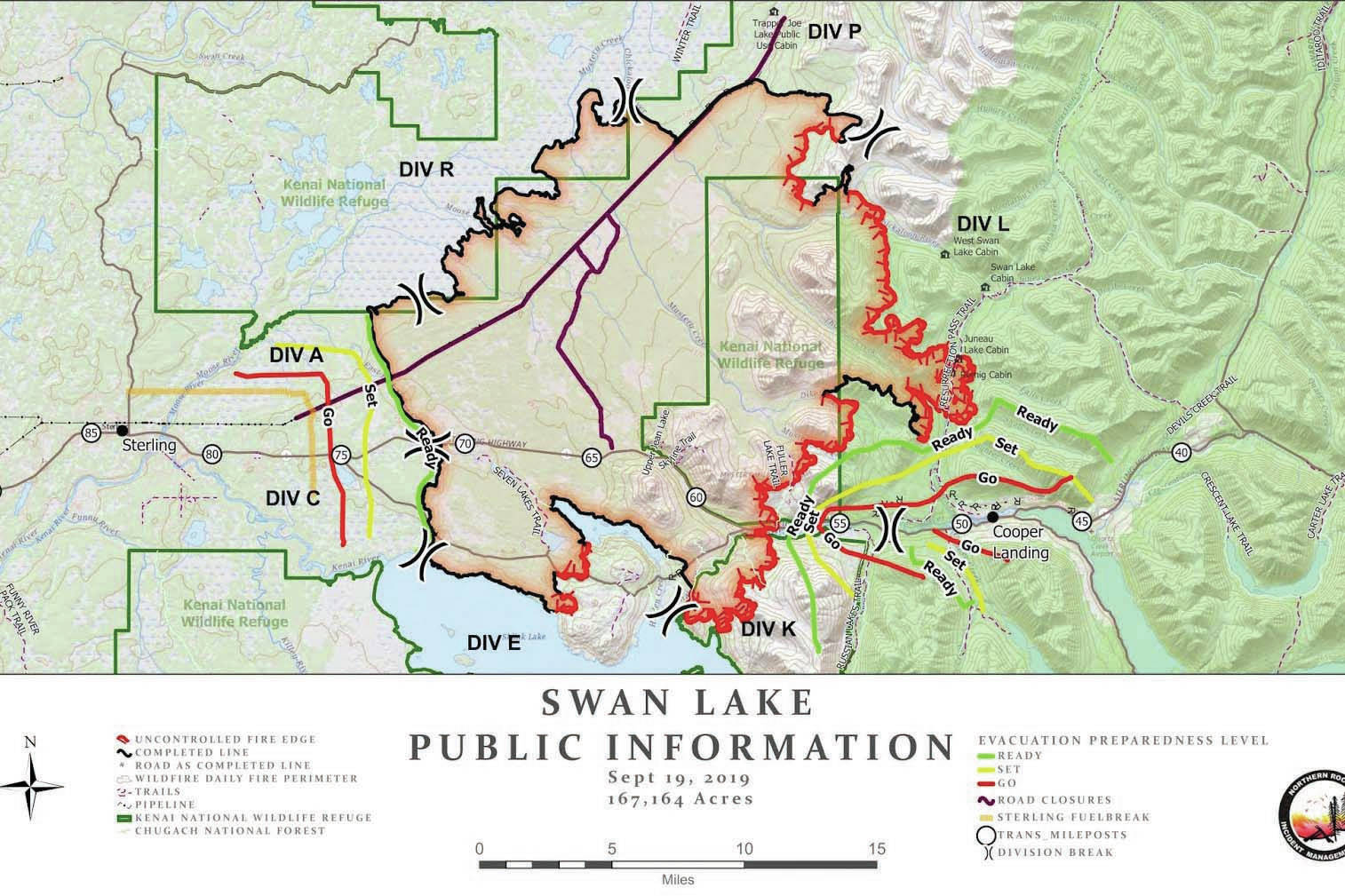With about two weeks left in the month, the Swan Lake Fire has already received more rain in September than it did all summer.
Fire crews currently have the fire 57% contained at 167,164 acres, according to the latest update from the Type 2 Northern Rockies Incident Management Team 4. Incident Meteorologist Brent Bower reported on Thursday that between Sept. 1 and Sept. 18, the area of the Swan Lake Fire received anywhere from 2.25 to 3.05 inches of rain. For comparison, the Kenai Peninsula received 1.51 inches of rainfall between June 1 and Aug. 12, according to the National Weather Service as reported by the Clarion on Sept. 7.
Public Information Officer Kathy Arnoldus said on Thursday that the consistent precipitation has begun to make a significant impact on fire efforts. Arnoldus said that more rain is forecast over the next five days, which is expected to keep fire behavior low and mitigate potential spread. Deep pockets of duff do continue to smolder in some areas, and there has not yet been enough rain to penetrate these layers.
Portions of the Kenai Peninsula north of the fire remain in a state of extreme drought, according to the latest update from the National Drought Monitor. The area of the fire ranges from being in a severe drought to a moderate drought.
With minimal growth being reported, firefighters have focused their efforts this week on clearing burned trees from roadways and other public use areas. Tuesday night, high winds caused weakened trees to fall across Skilak Lake Road and the Lower and Upper Skilak Boat Launch roads. Fire crews worked on Wednesday to cut clear the fallen trees and reestablished access through these roads.
The entire length of Skilak Lake Road is open, including Jim’s Landing and the Upper and Lower Skilak Boat Launches.
Campgrounds in the Skilak Wildlife Recreation Area remain closed due to the safety hazard posed by fallen trees. Drivers on the road should use caution and be aware of potentially blocked roads. Crews will continue to clear trees as needed to keep roadways open.
On the southern side of the fire and south of the Kenai River, repair of suppression lines will continue “where it is appropriate to do so,” according to Thursday’s update. Arnoldus said that no new containment lines are being built, but existing lines are being constantly monitored to ensure that they hold.
The structure protection group in Cooper Landing has spent the week packing up unused equipment and preparing supplies for backhaul. On Sept. 17, the “READY” evacuation alert for Cooper Landing was lifted by the Kenai Peninsula Borough Office of Emergency Management.
Management of the fire has cost $46.1 million as of Thursday, according to the situation report from the National Interagency Coordination Center.

